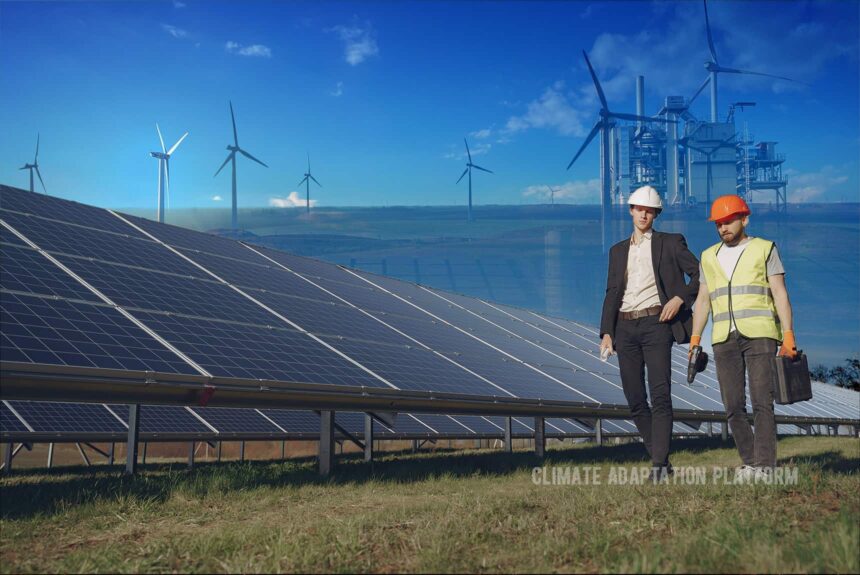Historically, our emissions have been strongly linked with how much we generate income. The wealthier people become, the higher their GHG emissions from energy produced fueled by fossil fuels.
The Economist article, “Economic growth no longer means higher carbon emissions,” looks back on how coal burning fuelled the foundries, factories, and plants in the 19th century, known as the Industrial Revolution, and where emissions correlate with people’s income.
According to the article, three centuries of burning coal have produced an unprecedented rise in living standards worldwide.
The same emissions have also caused the climate crisis that we are in
During the COP27 at Sharm el-Sheikh, developing countries and climate advocates turned much of their attention to “loss and damage” that they overlooked a positive development in climate change – the decoupling of many countries in their GDP growth and carbon emissions.
The historic link between economic growth and emissions has been broken. Some 33 countries, including the United Kingdom, United States, France, Germany, Sweden, Finland, Denmark, Italy, Czechia, and Romania, have experienced prosperity while reducing their emissions. These countries have decoupled economic growth and emissions.
In the US, for example, their emissions fell by 15% between 2007 and 2019 as their GDP rose by 23%.
Australia’s emissions have fallen 9% since peaking in 2012, and Israel has reduced by 12% in the same period while increasing their GDPs.
Decoupling did not only happen in rich countries but in emerging economies like Argentina, Mexico, and Uruguay. Mexico’s emissions have fallen by 16% since their peak in 2012.
Reasons for Decoupling
According to the article, decoupling is not a result of a large-scale deployment of renewables. However, it may have contributed to it now that countries are gradually transitioning the energy sector to clean energy, nor is it because many manufacturing activities are transferred to other countries, but due to the change in the relationship between economic growth and energy, and massive improvements in energy efficiency.
For instance, in the United Kingdom, the country’s imported emissions were taken into account when measuring its emissions, so their emissions reductions while experiencing GDP growth are a real deal, the article says.
Even big manufacturing countries have emitted less carbon, a “relative decoupling” phenomenon. China’s emissions have fallen from 1.5 billion tonnes in 2008 to 1 billion tonnes in 2019 due to the country’s improved efficiency and a move from importing chemicals and metals to less carbon-intensive electronics.
Most of the decoupling is achieved in western countries because the output becomes less energy intensive, and energy is generated from cleaner sources. The USA exemplified this.
Known before as the top polluter in the world, America has reduced the energy intensity of producing a dollar of income. Its local emissions peaked in 2005; since then, it has seen its energy-intensity fall by a quarter.
The gradual shift from energy-intensive production of goods and services is also brought by paradigm shifts that started in the twentieth century.
According to the SDG Action’s “How to create economic growth without carbon emissions and environmental damage”, the first shift is a Keynesian focus on education and government spending and then a neo-liberal emphasis on free markets. We are on the third shift, focusing on sustainable global growth and development.
According to SDG, the decoupling that happened in OECD countries in the last 30 years shows that it’s not only possible but well on its way due to two significant factors – improvement of energy efficiency and substitution of fossil fuels for renewable energy.
There are other ways that decoupling could be accelerated, such as higher efficiency in our material consumption and generation of waste through the substitution of non-renewable products for renewables and boosting recycling of materials and resources. The next step is to decouple waste generation from GDP growth.
Developing countries also show decoupling trends; they are industrialising differently from their predecessors.
For instance, as trade shifts from China to India and Vietnam, these countries’ exports are growing, but unlike China, they are more energy-efficient. Also, even though Vietnam and India still use coal to power their factories, they are becoming more efficient.
Click the links below to learn more about how countries can grow their GDP without increasing their emissions.
Economic growth no longer means higher carbon emissions. (2022, November 8). The Economist. Retrieved from https://www.economist.com/finance-and-economics/2022/11/08/economic-growth-no-longer-means-higher-carbon-emissions?
How to create economic growth without carbon emissions and environmental damage. (2022, April 4). SDG Action. Retrieved from https://sdg-action.org/how-to-create-economic-growth-without-carbon-emissions-and-environmental-damage%EF%BF%BC/



Leave a Reply